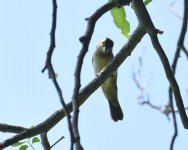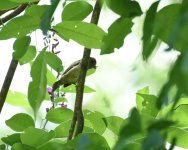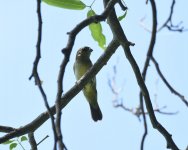This bird was found on the islet of Chacachacare which is of the NW coast of Trinidad (towards venezuela). Most seedeaters are considered locally extirpated here but now and again a few turn up in teh wild (escaped or migrants).
-
Welcome to BirdForum, the internet's largest birding community with thousands of members from all over the world. The forums are dedicated to wild birds, birding, binoculars and equipment and all that goes with it.
Please register for an account to take part in the discussions in the forum, post your pictures in the gallery and more.
Seedeater ID, Trinidad (1 Viewer)
- Thread starter bugmat
- Start date







